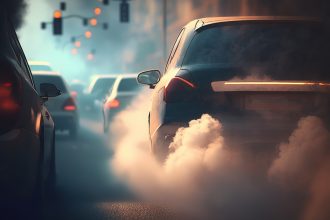Have you ever considered Brushless DC Motors for your favorite drones? If not, it’s time to get into these evolutionary motors in history after Brushed DC motors. After all, Brushless DC motors come with so many benefits. That’s why all other mechanical systems in various industries are not ignoring it. They are trying to get full benefits from this booming system.
Then, why should we not embed Brushless DC motors in drone propulsion systems? We should consider a Brushless DC Motor for Drone. That’s the reason why we feel the intense need to write this guide for our readers. We are fully open to helping you understand the role of Brushless DC motors in drone propulsion systems and why these motors are useful. So, let’s not exaggerate and directly get into this guide.
We want you to take a cup of coffee or your favorite drink as this guide is going to be a bit lengthy. However, it’s worth reading before you decide on a BLDC motor for your drone propulsion system.
What’s the Role of Brushless DC Motors in Drone Propulsion Systems?
BLDC motors are an essential component that has fueled the instant growth of the drone industry. Credit goes to the mechanism of brushless DC motors which uses a simple formula to fly a drone. The formula is – “using direct current (DC) to convert electrical energy into mechanical energy without using any traditional brushes.” That’s it!
There are various reasons behind the increasing use of BLDC motors in drone propulsion systems. People love to prefer these advanced motors in place of traditional brushed motors. Let’s see what are the key reasons why everyone prefers BLDC motors in drones and what leads it to become a standard in this amazing industry.
Efficiency and Endurance:
Efficiency, efficiency, and efficiency! It’s one of the main benefits of using BLDC motors in any mechanical system, either electronics, industrial machines, or drone propulsion systems. In terms of drone technology, Brushless DC motors turn electricity into spin more efficiently.
In other words, less wasted power gives you better performance of your drone. As we know, brushless DC motors lack brushes. Now, what does it show? Here, no brushes mean less friction. As a result, they run cooler and better.
This benefit will let your drones fly longer on one charge. We think longer usage is the key to fun or good work. Plus, better efficiency means batteries last longer. You charge them less often. That makes drones way more useful for longer or time-consuming jobs.
Power-to-Weight Ratio is Higher:
Drones need to be both strong and nimble. Am I right? Yup! This is because every tiny bit of extra weight can mess with how much they can carry and how well they can move. That’s where BLDC motors say, “I’m here for you!” They give you a lot of power without being heavy or bulky.
You can understand it like getting more muscle without the extra bulk compared to those old brushed motors. This power-to-weight thing is super important for making drones that can lift more and zip around easily. Hence, we can say that brushless drone motors are perfect for drones as they are strong and lightweight.
You can load up your drone with cameras and sensors without making it sluggish. So, BLDC motors give you the best balance of power and how long you can stay in the air for anything from cool aerial shots to serious data gathering. They really are the power behind drones’ great performance.
Curious to see how different BLDC motors compare in terms of voltage, weight, and power efficiency? Brushless.com shares detailed datasheets and real-use setups to help drone enthusiasts and learners explore the best fit for their projects.
Reliably and Durability:
The first concern that comes into my mind, and even in most pilots, when we send the drone up in the air is “Wish it does not falter mid-flight.” We understand that every drone pilot wants the assurance that it must stay in the air until the work is done. Fortunately, we have BLDC motors.
They are built to last because they don’t have those brushes that wear out due to more friction and workload. In the case of BLDC motors, fewer parts are moving around inside which means less stuff will go wrong (or torn) over time. So, you can send your cute drone up with more confidence saying, “It will keep on flying.”
Moreover, this dependable nature of motors is a big deal for drones. They are often flying in all sorts of places. Plus, they have to handle hot and cold weather, shaky movements, and sometimes a bit of a bump. So, having Brushless DC motors for drone flights can make a big difference.
Low Maintenance:
As we have mentioned before, there are no brushes to swap out and the design is simpler in that BLDC motor. They hardly need any extraordinary care and maintenance. For drone pilots, this means durability with a lot of benefits.
For example, they don’t need to waste their time on fixing it all the time. Plus, maintenance costs will be deducted. After all, it’s all about keeping your drone in the air, not in the repair shop.
This easy-to-care-for thing about BLDC motors is great for both people who just fly for fun and those who use drones for important jobs. More flying, less fixing – that’s the whole point!
More Control:
When it comes to drones, being super precise is what matters a lot. And every drone pilot wants to do their work precisely with the help of their drones. It’s possible if the pilot has full control over its drone. Your drone must be quick and easy to control no matter if you are filming something amazing or dropping off a package exactly where it needs to go.
BLDC motors are excellent at changing speeds whenever the pilot needs them for flying drones. They will respond in a nanosecond! These motors help the propulsion system to speed up or slow down the drone super smoothly.
As a result, it gives you much better control over your drone. This kind of precise speed adjustment is a must-have for every pilot, especially when you are using fancy flight controls and GPS to navigate. So, the BLDC motor and drone propulsion system all work together for smoother and more accurate flying.
Noise Reduction:
If we use BLDC motors for drone propulsion systems, it generally leads to a reduction in noise. On the flip side, brushed DC motors can increase the noise along with the propulsion system which is bad for our environment, especially wildlife. Thankfully, BLDC motors lack the physical contact between brushes and a commutator, which is the main source of mechanical noise in brushed motors.
Thus, the absence of friction and sparking results in a smoother and quieter operation. However, the whirring sound of the propellers cutting through the air is still a dominant noise factor for drones. Fortunately, the brushless motor itself adds less to the overall sound profile with BLDC technology.
This quieter operation is helpful for various applications. It may include surveillance, filming in noise-sensitive environments, and general operation in populated areas where noise pollution is a concern. However, factors like propeller design and motor speed still play a role in the overall noise level.
What do you think about the other roles a BLDC motor plays in drone propulsion systems? We want to hear your thoughts in the comments section. If you’re interested in digging deeper, Brushless.com is a great place to explore real-world BLDC motor examples, wiring guides, and ready-to-use motor kits—especially for drone builders who love to learn by doing.













